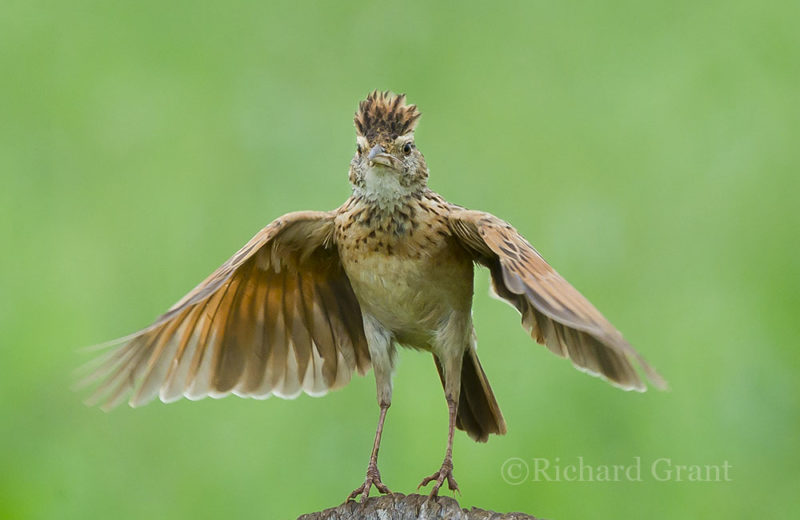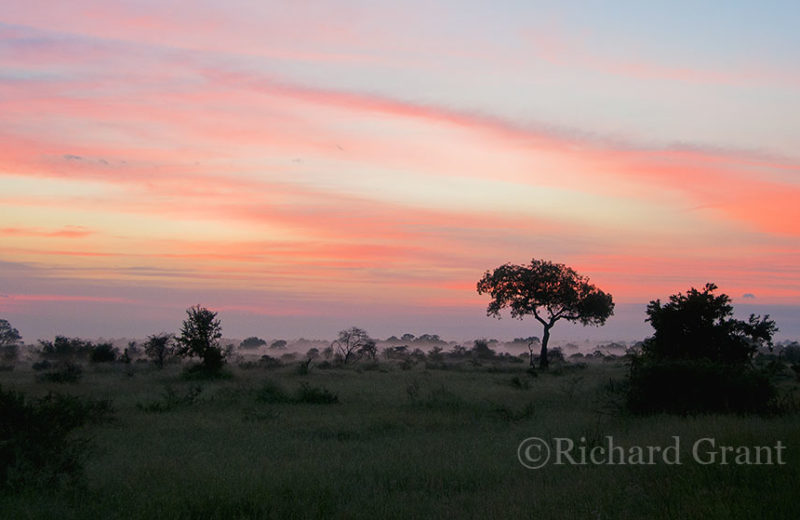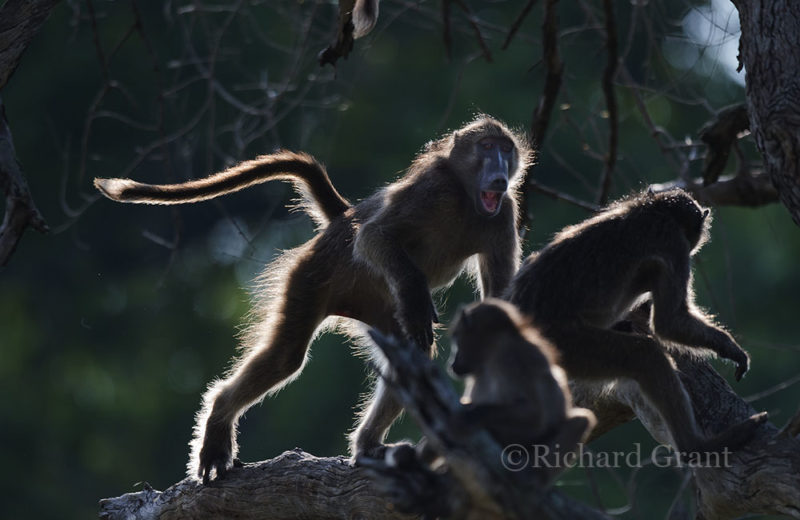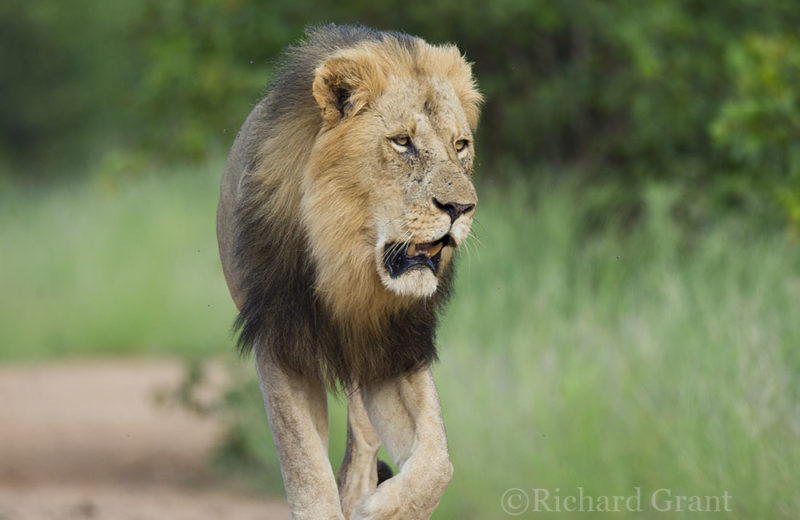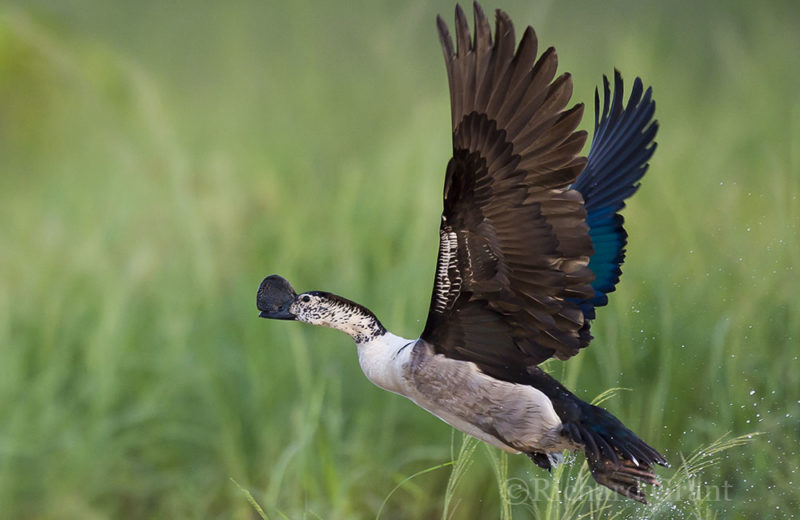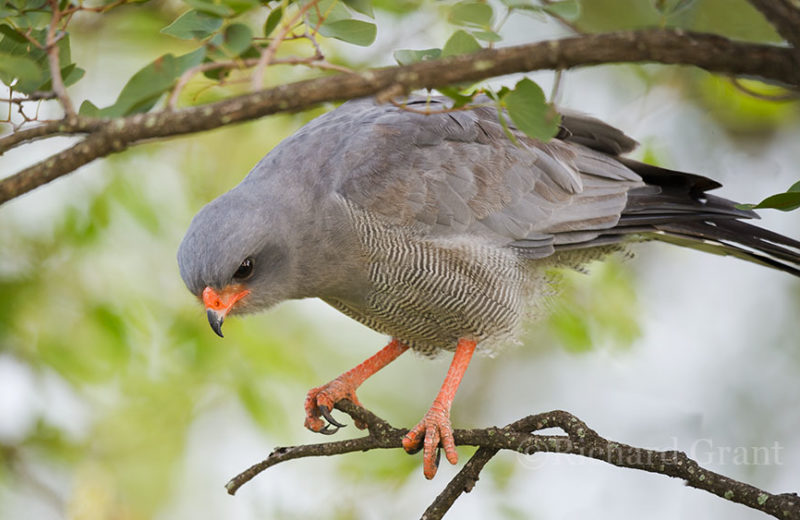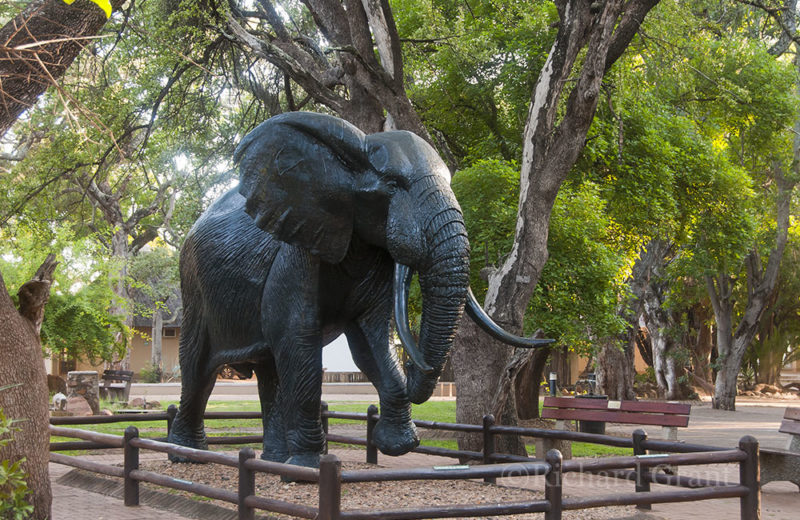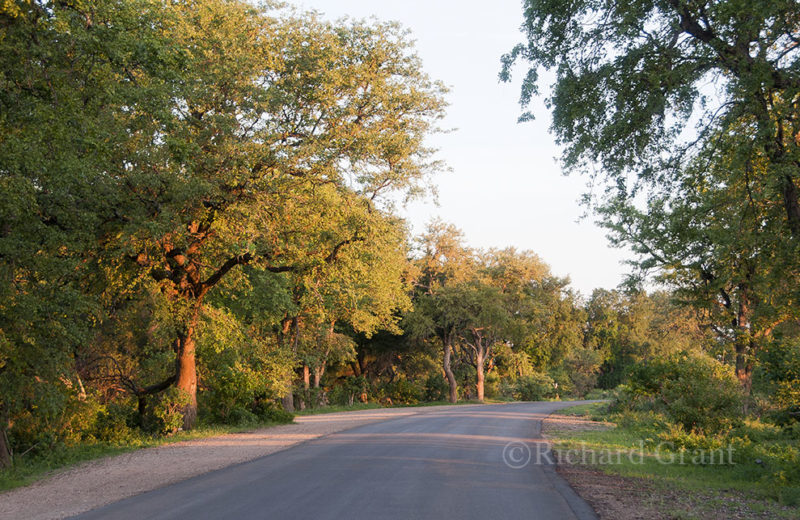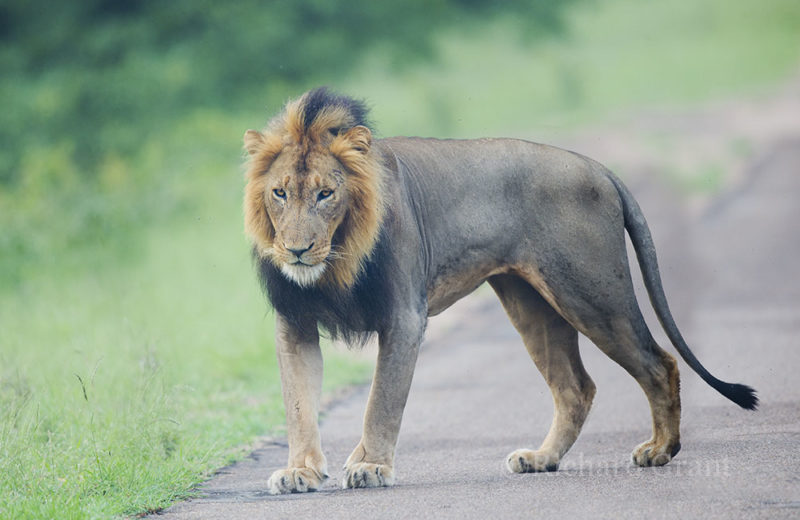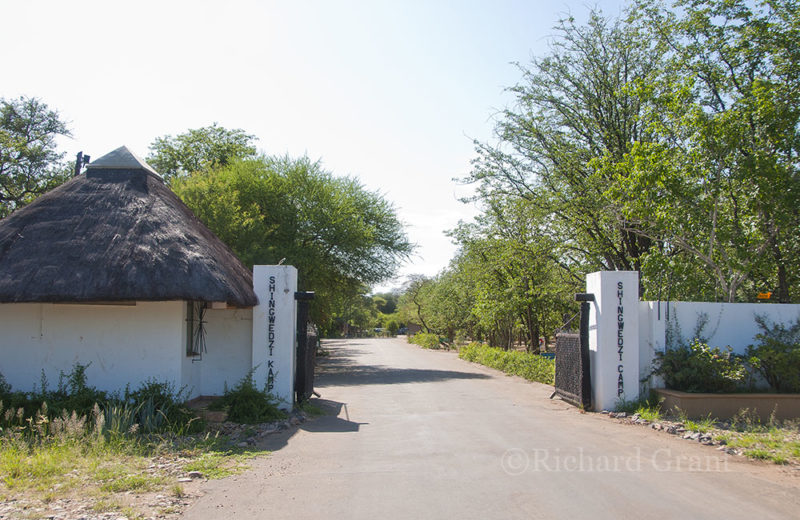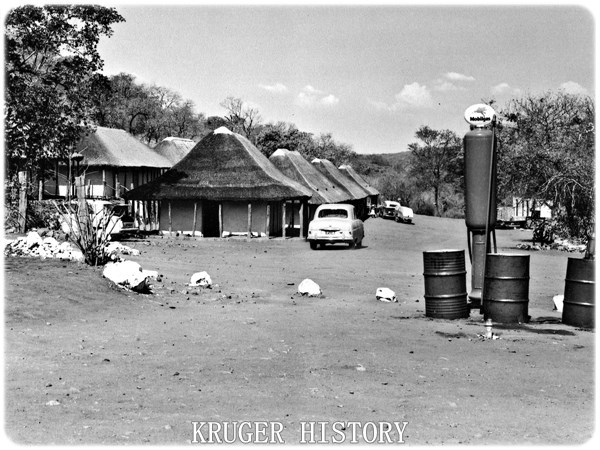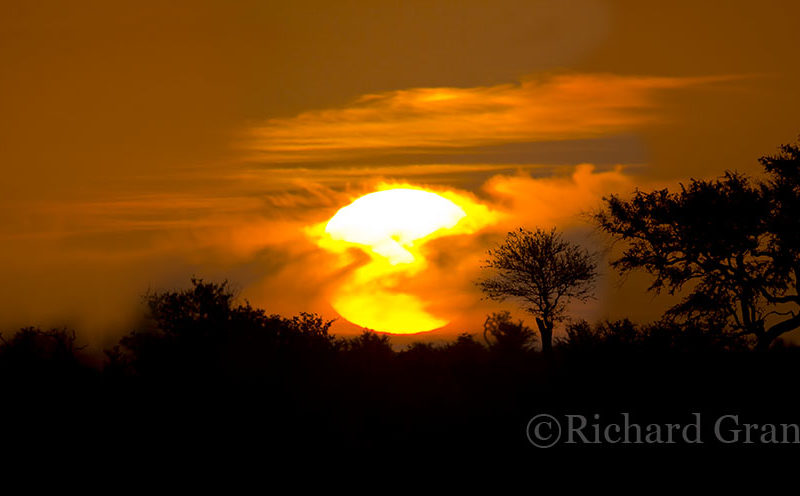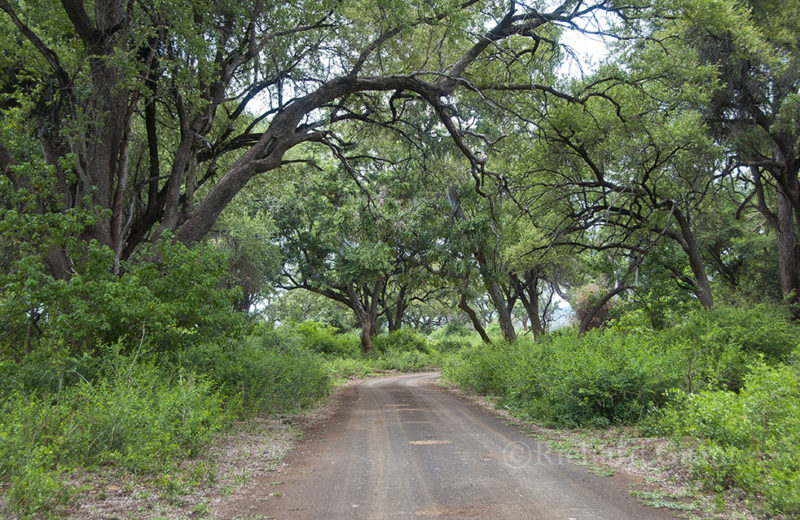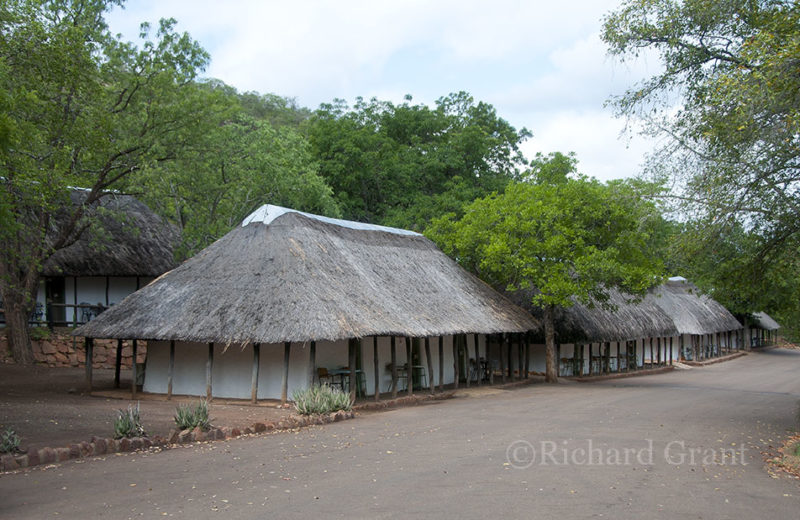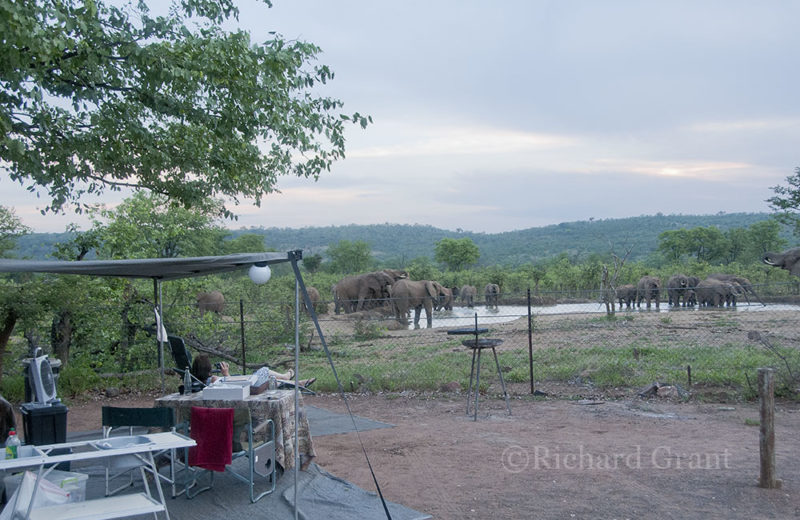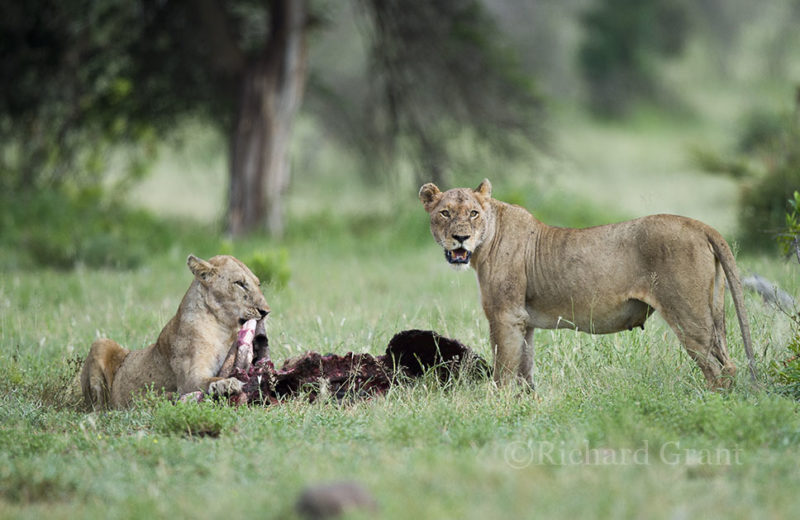Thursday, 14th February
As forecasted, the rain begins in the early hours. Quite gently at first but at 8am is pelts down leaving the campsite awash. It is pointless going out in this weather so we shelter until about 10am when it partially lifts. My rain gauge tells me that we have had 29mm and Jenky down in Sabi-Sabi says that they have had 80mm. So Kruger is getting a soaking.
So rather like fishing, heavily overcast weather and a little rain seems to help one’s prospects. I reason that the birds will be more static in this weather and less likely to fly off. Off we go down on the Kanniedood Dam road and this time Renette is with me. Kingfishers tend to perch at 1.5m – 2m’s above the ground on a sheltered branch so we crawl along really trying our best.
Before long, Renette has one of her inspirational moments and picks out our target – a Grey-headed Kingfisher. This time he does not fly off and allows me a rather long distant shot.

Then, very obligingly, he dives down into the undergrowth and comes up with a caterpillar and alights on a log right next to us.
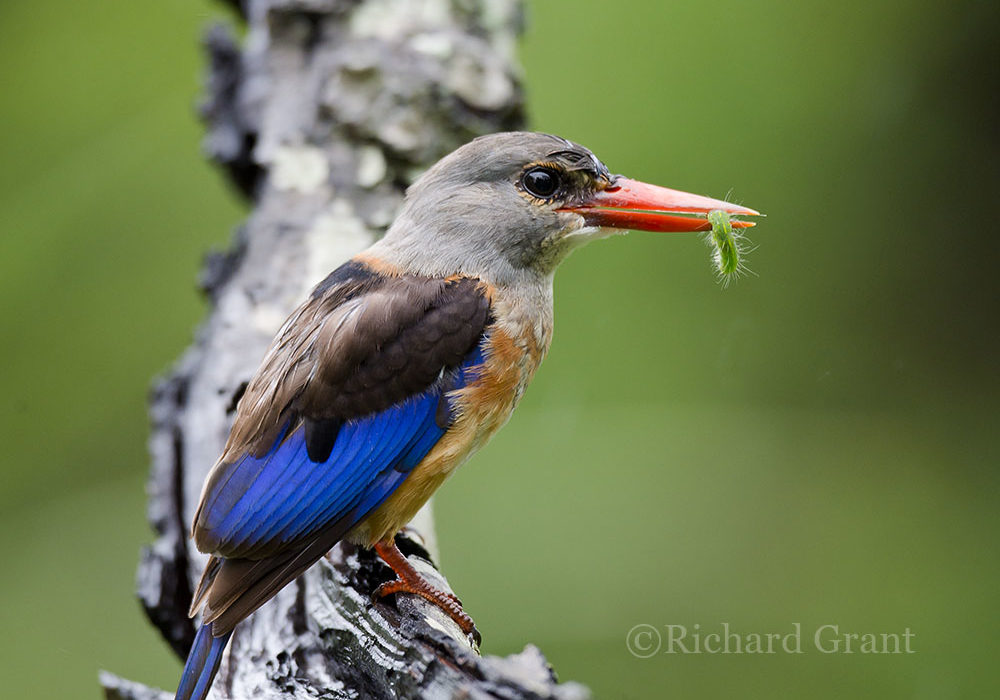
I can scarcely believe my eyes and my good fortune.
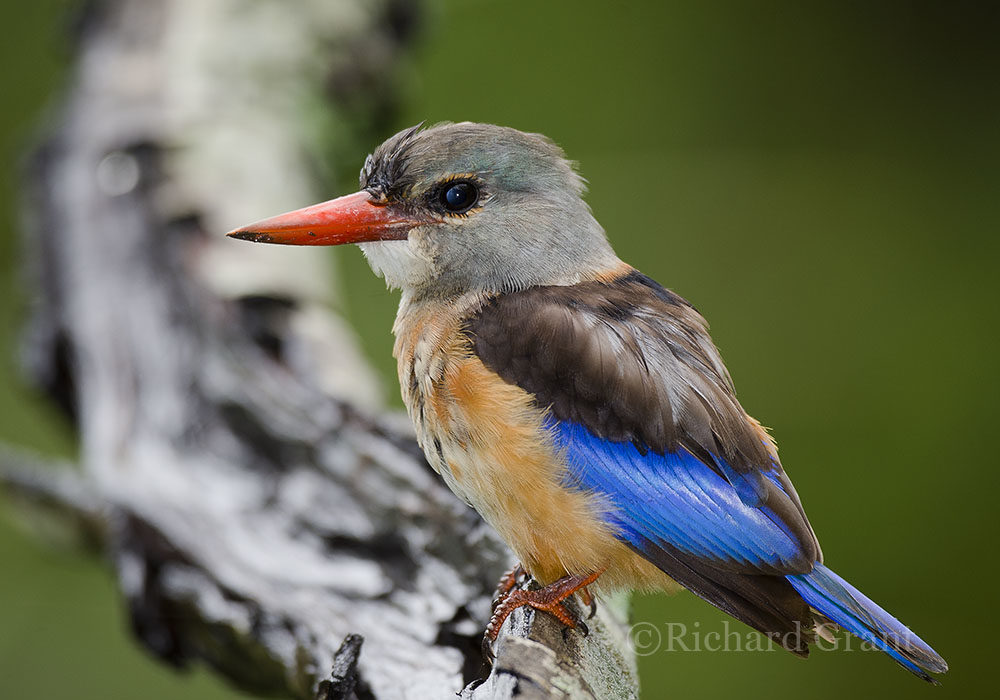
This bird photography is the most rewarding and exciting of pastimes. It is really the ‘thrill of the hunt’ as I have spent days after this bird and the elation when once found and photographed is enormous. What would I do without my camera?
We very happily return to camp to recover. At 1pm I go out alone and take the main tarred road west and then turnoff at Red Rocks where I get on the beautiful river road (S52) along the north bank of the Shingwedzi River. Many grey coloured Cuckoos are about but they are so shy that they fly off long before I can get anywhere near them. One however, flies into a tree and through thick foliage I finally manage to photograph it – a European Common Cuckoo.
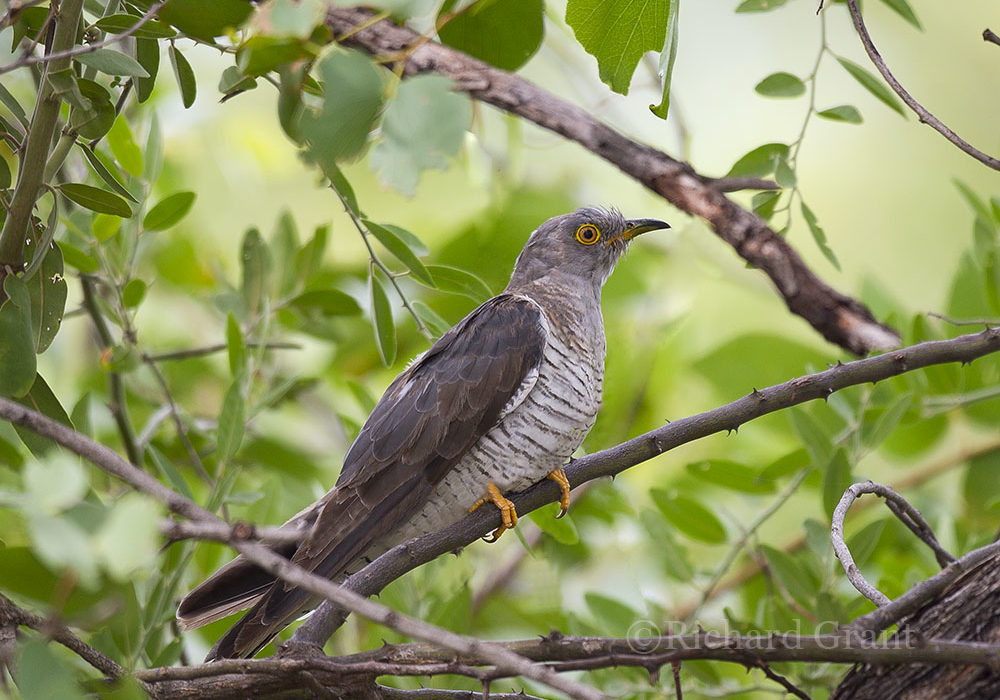
Although for some reason this bird is silent whilst in southern Africa, in Europe it is this bird’s call that is used in Cuckoo clocks.
Crossing back across the causeway I come upon three Southern Ground Hornbills which are feeding as they go through the grass.

Later I pick up Renette and we take the main north road. The Shingwedzi River has filled a lot since this morning but nearly all the water is coming down the Mpongolo River which runs north-south before joining the Shingwedzi. Hopefully that means that the northern areas including Punda and Luvuvhu have had good rain. Heavy rain clouds ahead and my ‘slow puncture’ make us turn back but we take the loop road (S135) that leads to the causeway next to the restcamp. Water is flowing quite strongly now and I have a few anxious moments as we cross through the strong flow.
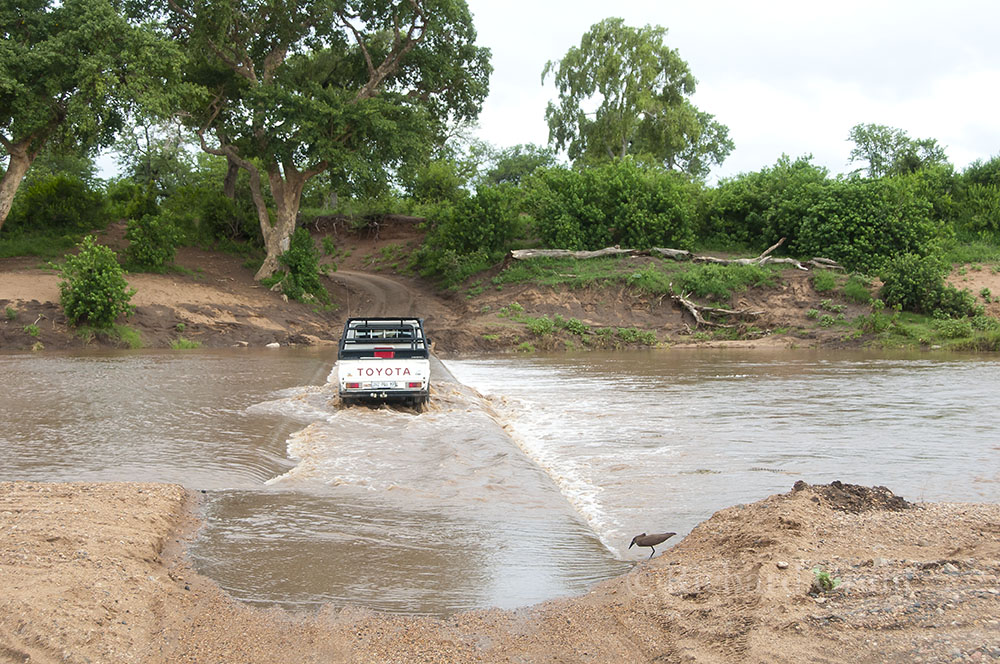
The same group of ‘fish feeders’ are still hanging about despite the causeway now being submerged.
Back to camp at 6.30pm.. I settle down to download photos but the power supply keeps going on and off. My UPS is not working so I have a most frustrating time culminating in an error message saying my computer is inoperable. Panic!! However, I run a repair procedure and all is well.
Friday, 15th February
We again leave camp at 6.30am in light drizzle and a gentle, cool, south wind. We are doing the Red Rocks (S52) road again. It is a real picture in these conditions and the birds are very active after the rain.
Renette finds an unusual Cuckoo on the ground some 60m from the road so I turn and manage to photograph it. Later blowing up the photo a lot, I find that this is the uncommon “hepatic” morph of a female European Common Cuckoo.
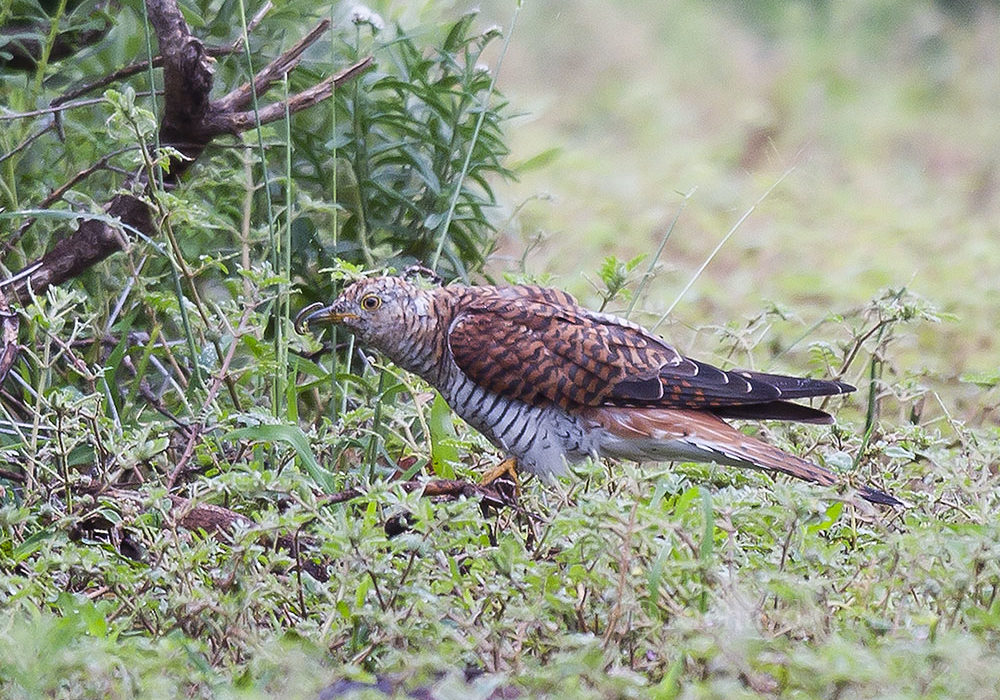
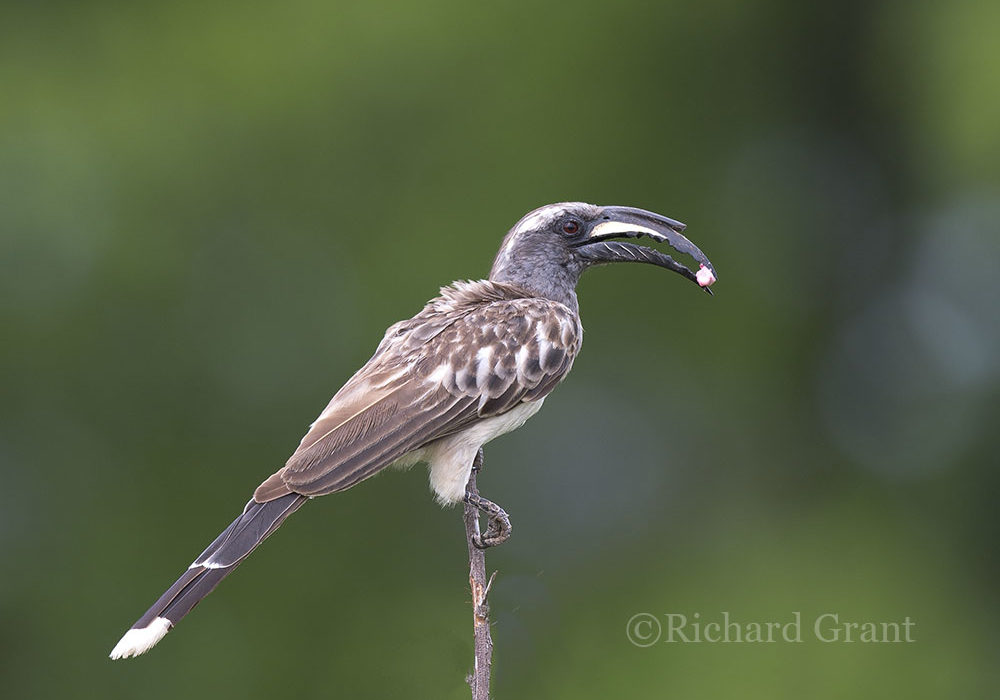
We thorough enjoy our drive and return to camp at 9.30am in quite heavy rain. I then take off to the workshop and a very helpful mechanic helps mend my puncture. It is a feature of Kruger how polite and happy are the staff working here. All of them say how grateful they are to be working in such an environment – far from the mayhem outside. One young girl at the till point said “they all want to fight outside the Park”.
Rain is falling in the early afternoon. I am not risking the erratic power supply this evening so I am going to send out the blog now.

